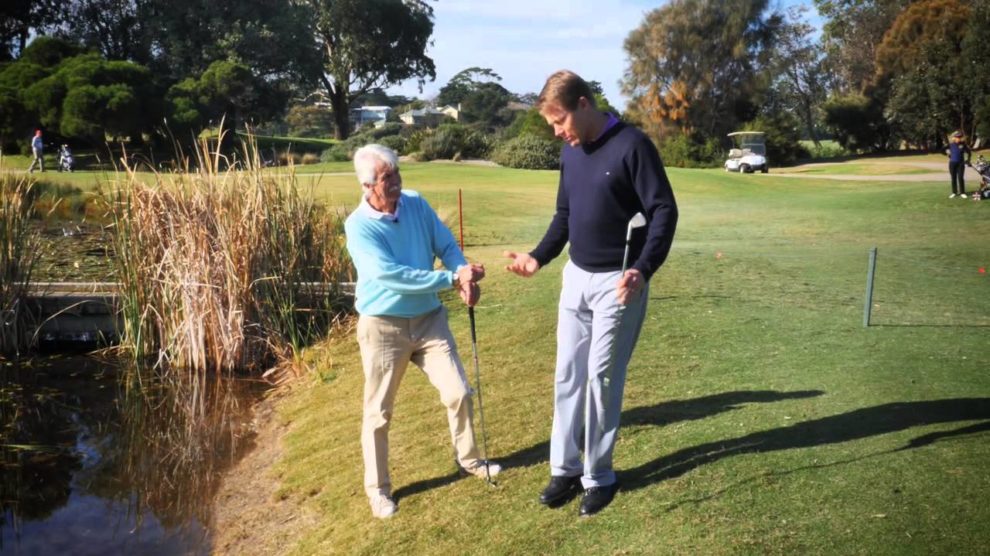On the golf course, there are two different kinds of water hazards: lateral water hazards and regular water hazards. The way to tell the difference between red, yellow and white stakes on a golf course is, of course, their color. Lateral water hazards are marked with red stakes and/or red paint around the perimeter of the hazard. Regular water hazards are marked with yellow stakes and/or yellow paint. White stakes mark out of bounds, and you don't want to be there.
How to take a drop from a red-stake lateral water hazard differs significantly from your drop options from a yellow-stake water hazard.
Red-stake lateral water hazards exist in places where it is not possible or impractical to drop a ball behind the water hazard like a golfer would when they hit in a yellow-stake water hazard.
When a golfer hits their ball in a red-stake lateral water hazard, the golfer has two options to drop the ball, take relief and incur a one-stroke penalty:
- Drop the ball within two clublengths of where the ball last crossed the margin (boundary) of the hazard, making sure the ball is no closer to the hole. This is typically the option most golfers take from a red-stake lateral water hazard, and it's easy to perform so as to keep to round moving.
- Drop the ball within two clublengths on the opposite side of the hazard equidistant from where the ball last crossed the margin (boundary) of the hazard, making sure the ball is no closer to the hole. This is an uncommon choice for relief from a lateral water hazard, but sometimes it makes sense when the other side of a lateral water hazard offers a better shot or angle to get to the green than the original point of entry in a red-stake hazard.
No matter the choice a golfer makes to take relief from a red-stake lateral water hazard, the golfer can lift and clean their ball out of the hazard (assuming they find it) or can put a new golf ball into play to replace the ball which went in the hazard.
Golfers have been expected to drop from shoulder height, but in 2019, the expected height will change to knee height. This way, it's more likely a dropped ball will stay where a player can take relief, saving time while maintaining the random nature of a drop.
Also in the Rules of Golf, the USGA and R&A encourages more golf courses and tournament committees to declare more lateral water hazards under the new name of "penalty areas."

